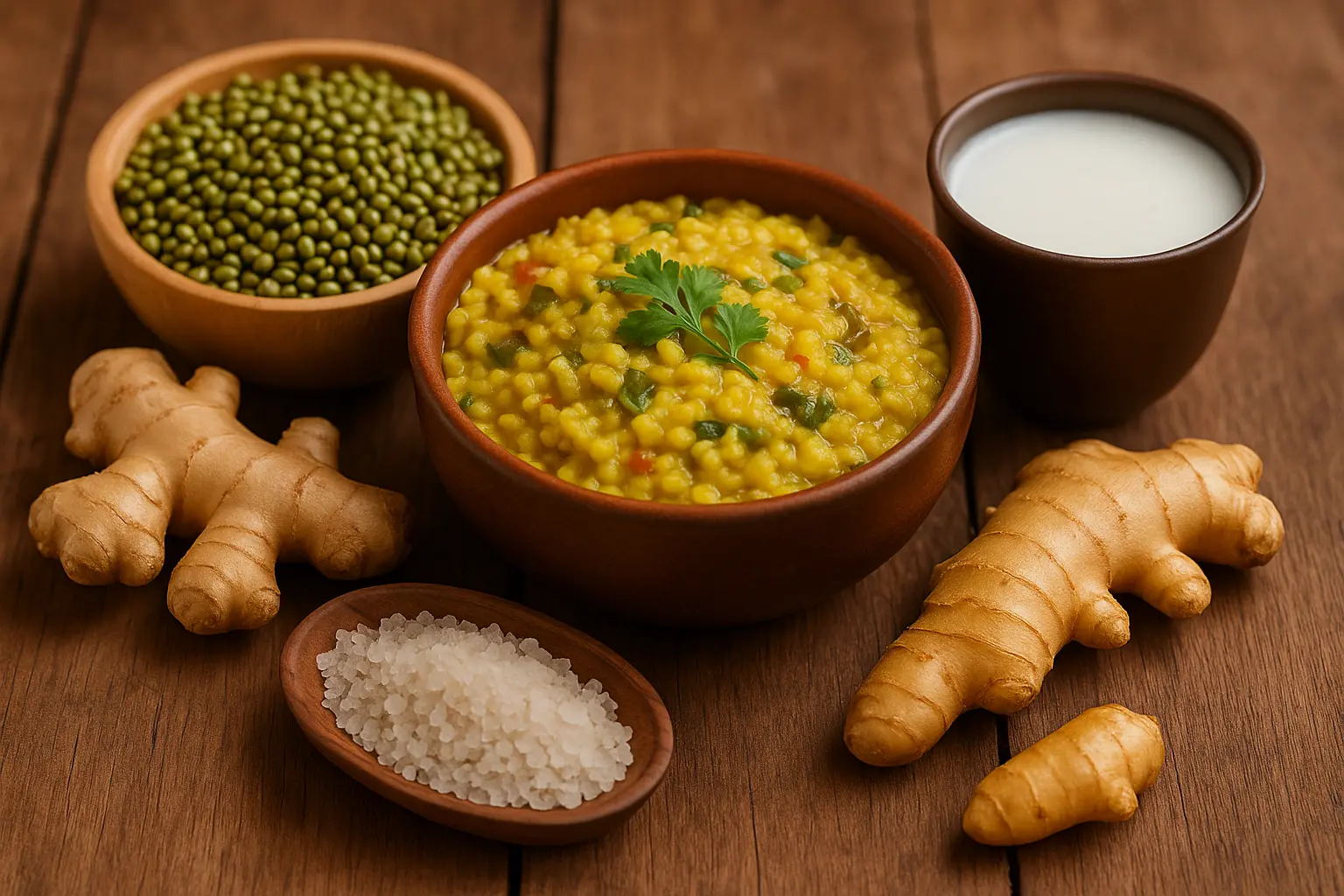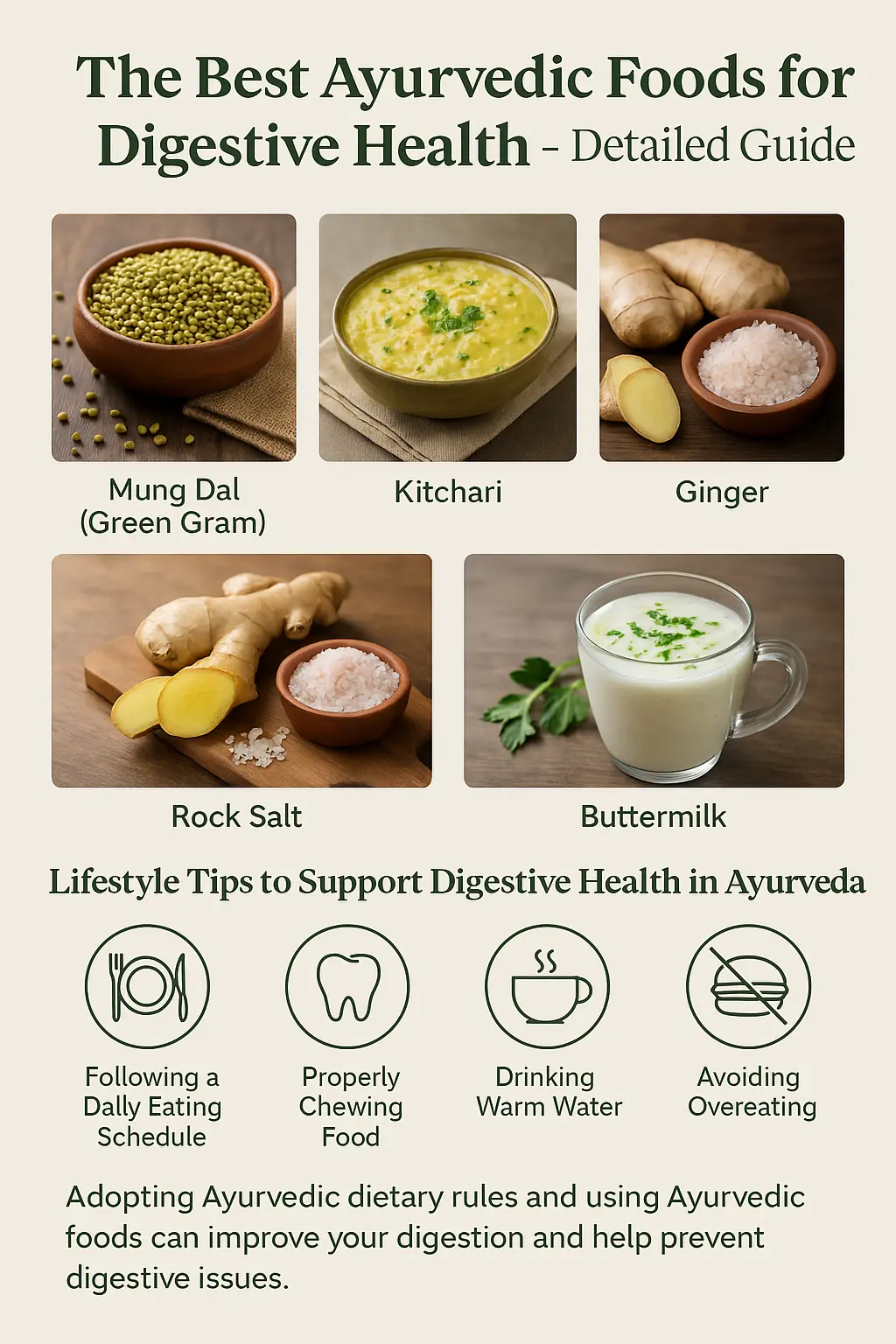
Digestive health is supported naturally by Ayurveda, which is an ancient system of natural healing. It is believed in Ayurveda that for great health, one must have a strong digestive fire (Agni) and this is the basis for good digestion. Digestion, gut health, and preventing digestive problems are all supported by several Ayurvedic foods. In this guide, we will study the best Ayurvedic foods for your digestion, how they help, and how to use them every day for better digestive health.
Mung dal is a light green legume that people find easy to digest. It is often included in cleansing diets in Ayurveda and is a main ingredient in diets meant for people recovering, both because it promotes a calm and clear mind.
Mung dal supports digestion by improving Agni and avoiding the formation of toxins. Certain strains of bacteria in yogurt help make the gut walls stronger, improve how nutrients are absorbed, and reduce feelings of flatulence and gas.
All doshas, particularly beneficial during periods of weak digestion, recovery from illness, or seasonal transitions.
Kitchari is a blend of split mung dal, white basmati rice, ghee, and Ayurvedic seasonings prepared as a porridge. During Panchakarma (detox), which is meant to cleanse the body and improve digestion, rice pudding is a key meal.
Because kitchari is so simple, it helps the digestive system rest and concentrate on clearing out toxins and repairing tissues. The herbs are delivered more efficiently throughout the body by the ghee.
Vata and Pitta types, and anyone undergoing a cleanse or recovering from gut disorders.
In Ayurveda, ginger is known as Ardraka (fresh) and Shunthi (dried) and is regarded as the best digestive stimulant everywhere. It is respected because it helps digestive fire (Agni) and improves the digestive process.
Fresh ginger is oily, spicy, and has a strong smell, which is why it’s good for giving a boost to sluggish digestion in Kapha and Vata types. It clears Ama and allows Prana (life force) to reach the digestive organs.
Best for Vata and Kapha doshas, but Pitta types should use in moderation, especially in hot climates or when experiencing acid reflux.
Unlike white salt that is processed, rock salt is found and taken from old seabeds. Its mineral content makes it beloved in Ayurveda for its easy digestion.
Rock salt is a gentle coolant that also stimulates Agni, which makes it good for Pitta individuals to enjoy. It is regarded as tridoshic and is a common ingredient in Ayurvedic remedies for digestive problems such as Lavan Bhaskar Churna.
All doshas, especially Pitta, who may be sensitive to regular salt.
Takra is prepared by diluting, churning yogurt with water, and adding digestive spices. Takra is different from plain yogurt because it is light, astringent, and easier for the body to digest.

Takra helps balance both Kapha and Vata, but it does not aggravate Pitta while it improves digestion. It is commonly given to help with chronic indigestion, hemorrhoids, and conditions of the liver or gallbladder.
Best for Kapha and Vata. Use cautiously for Pitta if there is acidity or inflammation.
| Food | Key Action | Best For | Contraindications |
|---|---|---|---|
| Mung Dal | Gut healing, anti-bloating | All Doshas | None, if properly cooked |
| Kitchari | Digestive reset, gentle detox | Vata, Pitta | Not suitable for high Kapha alone |
| Ginger | Digestive fire stimulant | Vata, Kapha | Caution for Pitta (hot nature) |
| Rock Salt | Enhances enzymes, reduces gas | All Doshas | Use in moderation for edema |
| Buttermilk | Probiotic, reduces bloating | Vata, Kapha | Avoid in high Pitta cases |
Digestion is considered very important in Ayurveda, especially because of the foods we eat. A strong Agni which supports well-being, depends on these dietary guidelines in Ayurveda:
As well as recommending certain foods, Ayurveda offers ways to improve digestion by living properly:
Adopting Ayurvedic dietary rules and using Ayurvedic foods can make digestion better, boost your digestive fire, and help prevent digestive problems. Having mung dal, kitchari, ginger, and buttermilk can help restore the health of your digestive system and keep it working well.
Adding Ayurvedic foods and methods to your daily life can help you have good digestion, feel more energetic, and maintain your general health. Ayurveda focuses on harmony, so choose the habits and meals that fit your body type (dosha) and your way of life.